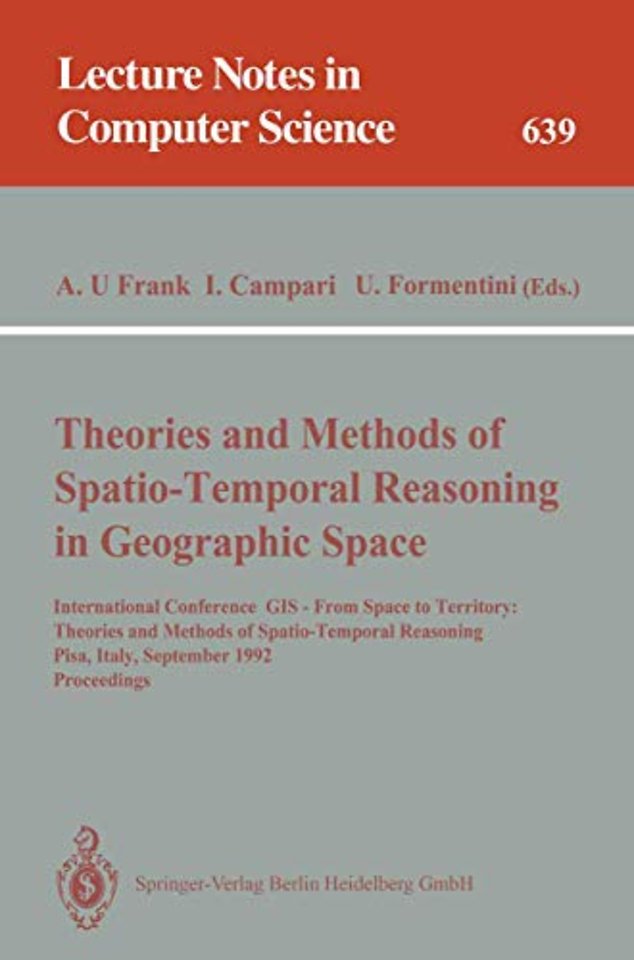Theories and Methods of Spatio-Temporal Reasoning in Geographic Space
International Conference GIS - From Space to Territory: Theories and Methods of Spatio-Temporal Reasoning, Pisa, Italy, September 21-23, 1992. Proceedings
Paperback Engels 1992 1992e druk 9783540559665Samenvatting
This volume collects the papers presented at the first
international conference dedicated to spatial and temporal
reasoning in geographic space, entitled "GIS: from space to
territory - theories and methods of spatio-temporal
reasoning".
Within the National Center for Geographic Information and
Analysis (NCGIA, one of the supporters of the conference)
the importance of spatial and temporal reasoning was
recognized several years ago. Initial research found that
spatial reasoning in geographic or large-scale space is
different from spatial reasoning in small-scale space, as
usually dealt with in robotics and expertsystems. Temporal
reasoning has attracted interest in the artificial
intelligence community.
The volume also includes two invited papers: "Do people
understand spatial concepts: the case of first-order
primtives" by R.G. Golledge, and "Temporal databases" by
R.T. Snodgrass.
Specificaties
Lezersrecensies
Inhoudsopgave
Rubrieken
- advisering
- algemeen management
- coaching en trainen
- communicatie en media
- economie
- financieel management
- inkoop en logistiek
- internet en social media
- it-management / ict
- juridisch
- leiderschap
- marketing
- mens en maatschappij
- non-profit
- ondernemen
- organisatiekunde
- personal finance
- personeelsmanagement
- persoonlijke effectiviteit
- projectmanagement
- psychologie
- reclame en verkoop
- strategisch management
- verandermanagement
- werk en loopbaan

